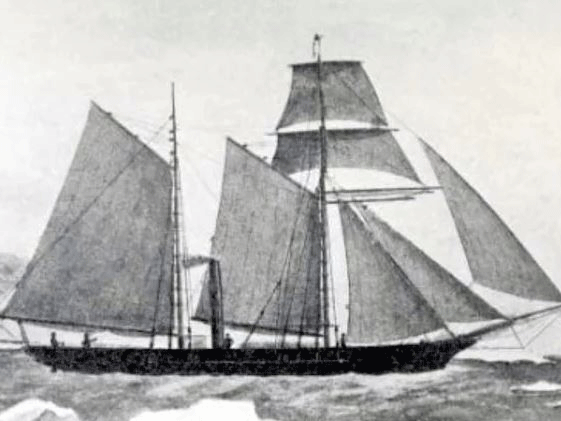British steamship lost in Siberia discovered by Russian explorers after almost 140 years
‘We did a few dives. And there it was, the stern section, about maybe half a metre coming up from the sand,’ says an Arctic historian on the expedition

A British steamship whose crew were trying to find a sea route into Siberia has been found almost 140 years after it sank during the attempt.
Russian researchers have discovered The Thames, a steamship with sails which braved the Arctic ice in the 19th century, sunk deep in the bed of the vastly long Yanisei river that traverses the country.
Found with its stern above the sand and the rest buried eight metres beneath silt, the long-lost Thames has been hailed "the discovery of the year" by regional media.
Members of the Russian Geographic Society (RGS), which helped organise the expedition, said the find testifies to the legacy of British exploration close to the Arctic Circle throughout the 19th and early 20th century.
Alexander Goncharov, associate professor in Arctic history at the Siberian State Aerospace University and a member of the expedition, said the team had set out along the Yanisei river with the specific intention of discovering The Thames' final resting place.
“We knew that The Thames was there somewhere. We went looking through old maps and charts,” Dr Goncharov told The Independent. The team were near a bend in the river at the village of Goroshikha.
“We had sonar and a camera that was submergible, but the water is very murky there so we didn't get good resolution.
“But we were measuring the depth at the mouth of this little creek – it's very deep there, about 10 metres x0150 and then all of a sudden it was very shallow.
“We did a few dives. And there it was, the stern section, about maybe half a metre coming up from the sand. There is no other vessel that could be there. It was in the right spot, and the right size. It was The Thames.”
The 120-tonne steamship was captained by Joseph Wiggins, an explorer determined to find a sea route between Britain and Siberia through the Arctic Ocean.
Under his guidance the ship was the first ocean vessel to enter the great Yanisei river and one of the first to navigate the North East Passage, which headed up Norway's coast and across over Siberia to come down towards Japan.
In a biography of Captain Wiggins by Henry Johnson, called The Life and Voyages of Joseph Wiggins, the author prints part of the captain's own logbook during The Thames' voyage on page 106.
“On we steamed. Evening soon closed in, and a headwind, springing up, compelled us to anchor for the first time in the Yenesei River,” he wrote.
“The first British flag that had ever flown on this mighty river was hauled down at sunset. We had hoisted it in the afternoon on perceiving the natives.”
In pictures: Life in the Arctic
Show all 28Yet when Captain Wiggins reached the Yanisei river in The Thames in 1876, returning the next year to continue the expedition, he ran the ship aground where it froze to the riverbed. While he and his crew disembarked and sold some parts to local merchants, the abandoned ship eventually sank in the spring thaw of 1878.
Such was the British enthusiasm for securing a fast trade route to Siberia, which was rich in coal, fur and timber, that explorers continued to send boats every year from about 1893, said Dr Goncharov.
“There were many English expeditions in the 1800s, especially starting from 1893, after which they were sent annually,” he said.
“Your countrymen really explored that route.”
However, regional newspaper Nash Krasnoyarsk Krai, which dubbed the event “the discovery of the year”, said the find should hail a new era of Russian exploration of the area.
It read: “The find to the north of Krasnoyarsk [a nearby city] can replace scepticism with a positive attitude towards the reclamation of the Russian north, promising incredible benefits.”
The chair of the Russian Geological Society is the country's president, Vladimir Putin. Russia is keen to claim the trade routes and oil fields near the Arctic Circle as global warming makes them increasingly accessible.
Archaeological finds more than 100 years old require special permission to be excavated, said Dr Goncharov, meaning the team must wait to find out when they can bring The Thames up from its sandy grave.
Subscribe to Independent Premium to bookmark this article
Want to bookmark your favourite articles and stories to read or reference later? Start your Independent Premium subscription today.

Join our commenting forum
Join thought-provoking conversations, follow other Independent readers and see their replies